1888 map.

Players Cigarettes Map

Since its inception Sandwich has been controversial due to the perceived premium placed on long hitting and the reliance on the vagaries of the terrain. The club founder, Scotsman Laidlaw Purves, must have had connections with the R&A for despite the polarized opinion, within five years of its founding, Royal St Georges Golf Club hosted the Amateur. Two years later, in 1894, JH Taylor was the first winner of an Open held south of the border. 326, the highest winning score in Open history, confirmed the rugged reputation of Sandwich. Despite many changes aimed at reducing blindness and generally modernizing the links, Purves would yet recognize the formidable character of the links. Purves too would be pleased that Royal St Georges has remained at the heart of English golf. The club has hosted the Open on 14 occasions, the Amateur 13 times, The Walker Cup, The Curtis Cup, the English Amateur, the Home Internationals and the Brabazon Trophy.
The original concept of Sandwich was a golfing club not too distant from London which afforded its members the opportunity to escape the ever increasing crowds on the courses near the city. While there are today many fine courses which are not terribly crowded, London is heavily represented in the membership roll. Not surprisingly, the club is very traditional and exhibits a reserved yet approachable demeanour. For instance, seemingly, very little changes, but recently the club took the momentous step to allow women to be proposed for membership. As an early advocate of womenís golf, Mr Purves might very well have had the last laugh on this matter. On the links too there was change unrelated to stiffening the test for the professionals. Not of the clubís doing, but never the less, the demolition of the Richborough power station cooling towers was a sad day for some as it was the most recognizable landmark on the horizon.
Changes to the course continue to this day as recently the bunker behind the 12th was removed and a bunker was added on the right side of the 9th fairway. These of course are not nearly as serious as the changes which took place in the 70s. After a long hiatus in hosting the Open, the club decided to engage Frank Pennink to remove some of the idiosyncratic elements of Sandwich, thus the blind third so loved by Bernard Darwin gave way to a rather modern and predictable long par 3. The new 8th on the other hand, a par 3 converted into a formidable par 4 echoes the Sandwich of 100 years ago. The final major change was the creation of the 11th, another drive and pitch hole converted into a rather charmless long one-shotter. Despite the many alterations, the original routing, save for the old Maiden 5th, remains in place. I suspect few courses over 130 years can make this claim.
Looking at the club entrance it is hard to imagine a course of distinction lays beyond.
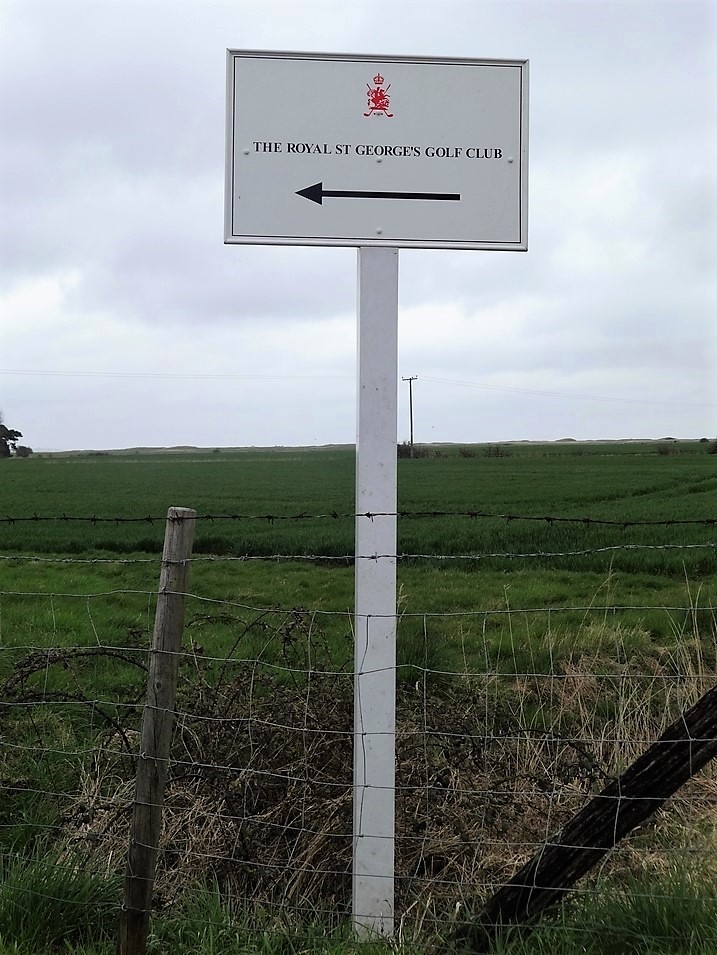
I am astonished the course is
only 6340 from the daily markers. Sandwich plays far longer and most handicap players can expect a load of wood play.
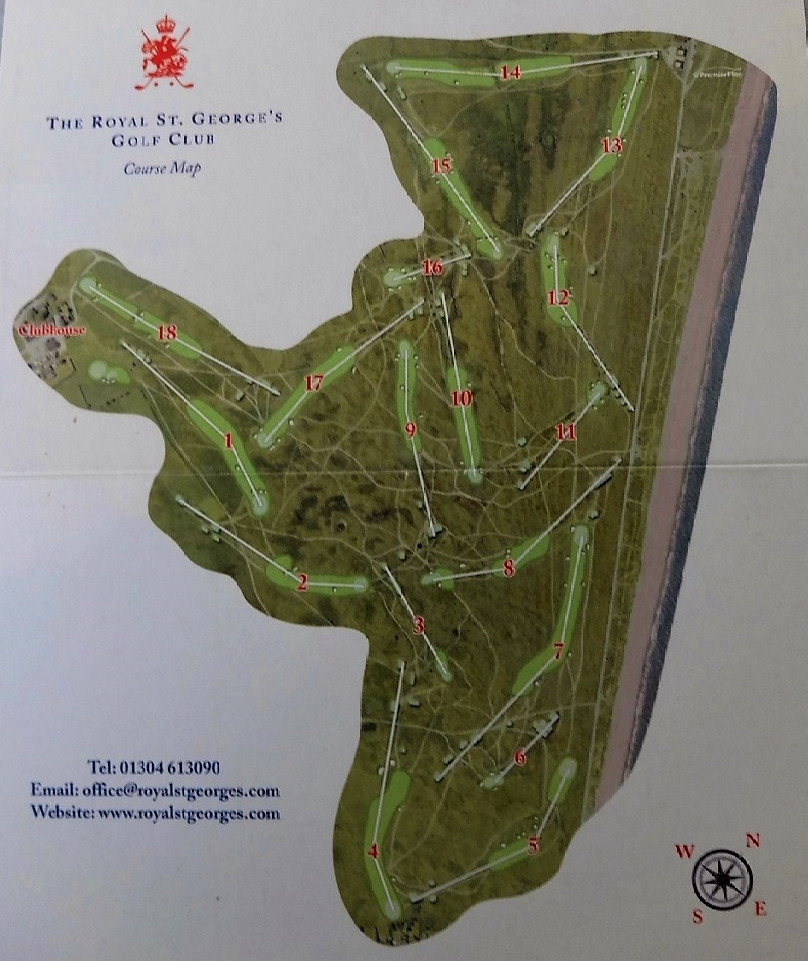
The 1st tee now and then.
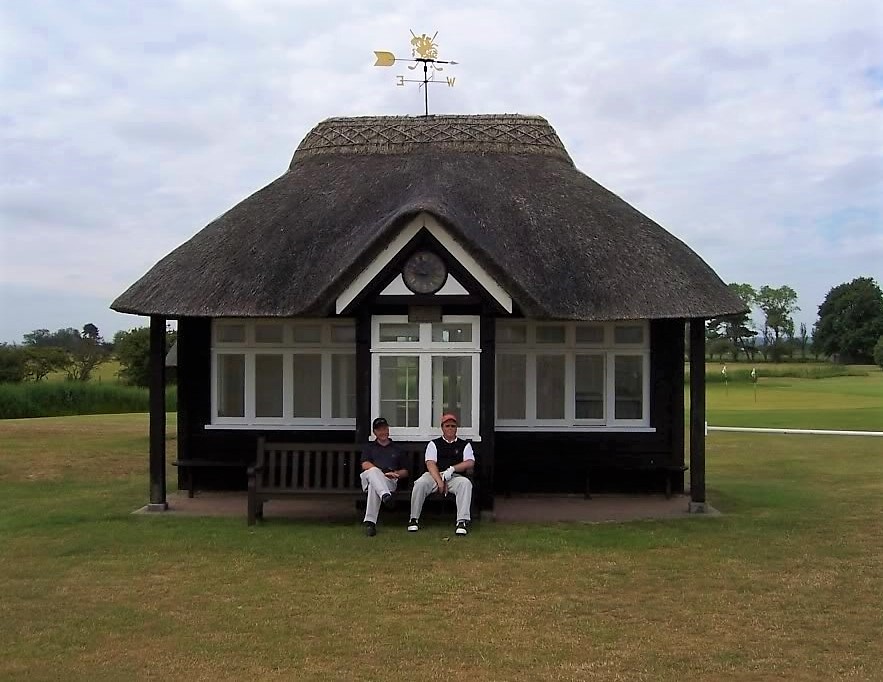
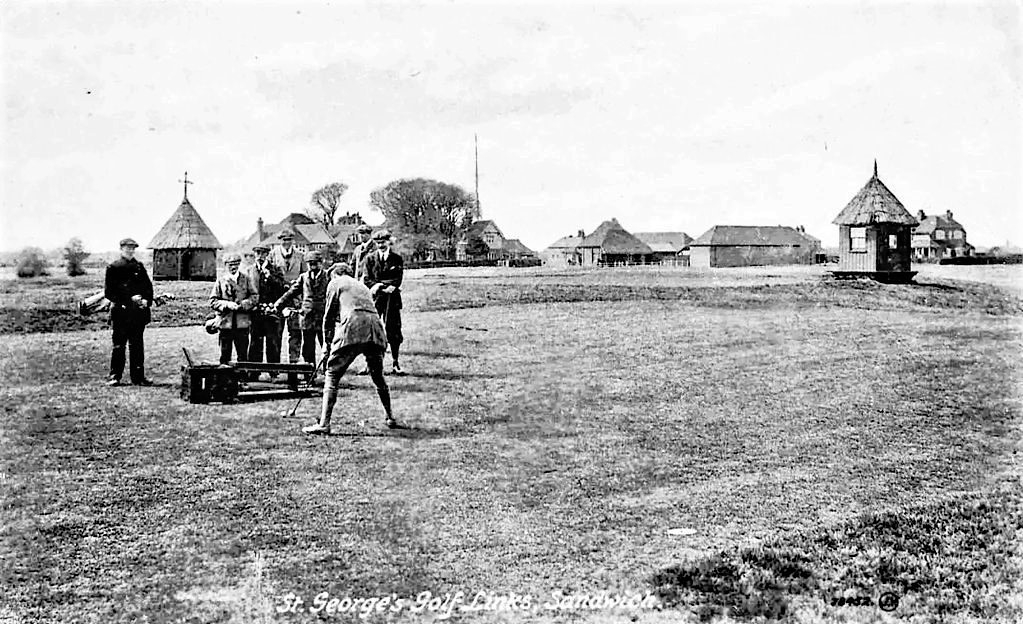
The first is a curious start being a 100 yard or so walk from the club garden. The land for the first half of the hole isn't distinctly different from that covered during the walk. It isn't until the approach over scattered bunkers that we see and feel the rumpled links. Sandwich has a few such instances where the fairway does not cover the area which affords the best line. The best line of approach is to the right of the photo in the meadowy rough, hence we have the situation of a forced carry.
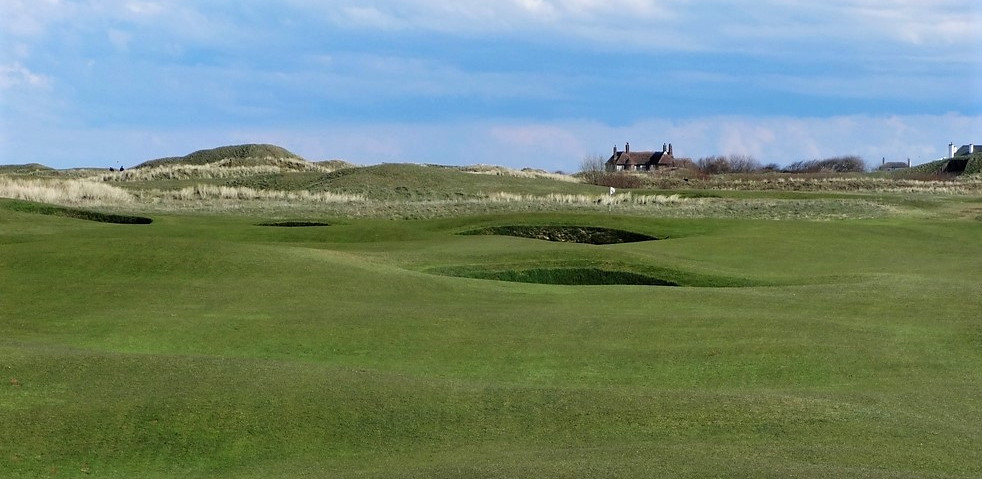
One of the few criticisms that can be levelled at St Georges is the consistent 75-100 yard walks between greens and tees. I suspect this is the bi-product of lengthening the course over the years, but in the case of the 2nd there is the advantage of a strategic drive with the tee well right of the 1st green hard on the inland side of the course. One can play well left over a low dune housing sand or play safely to the right...for most right is right. It is the second shot which is of most interest. There is a large hollow which sheds approaches from the front right of the green. Often times, the golfer can't see this hollow. Pictured is that intrepid South African, Philip Gawith.
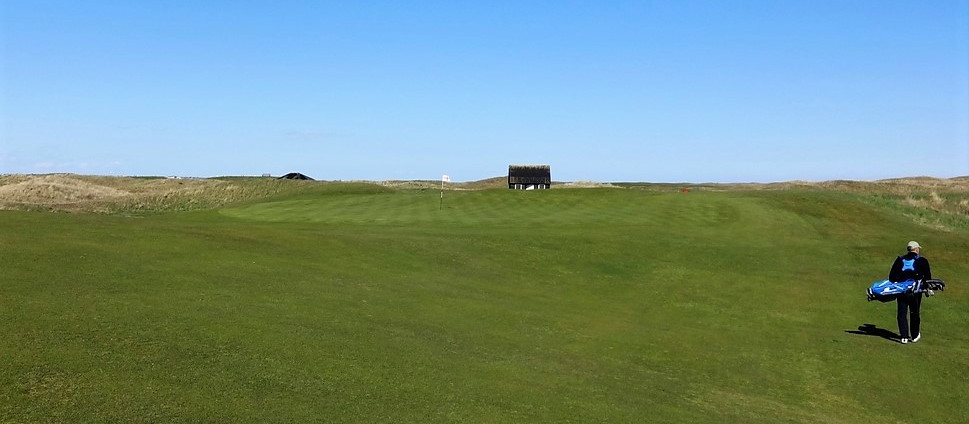
For the bold off the tee, below is a look at the advantage which can be gained.
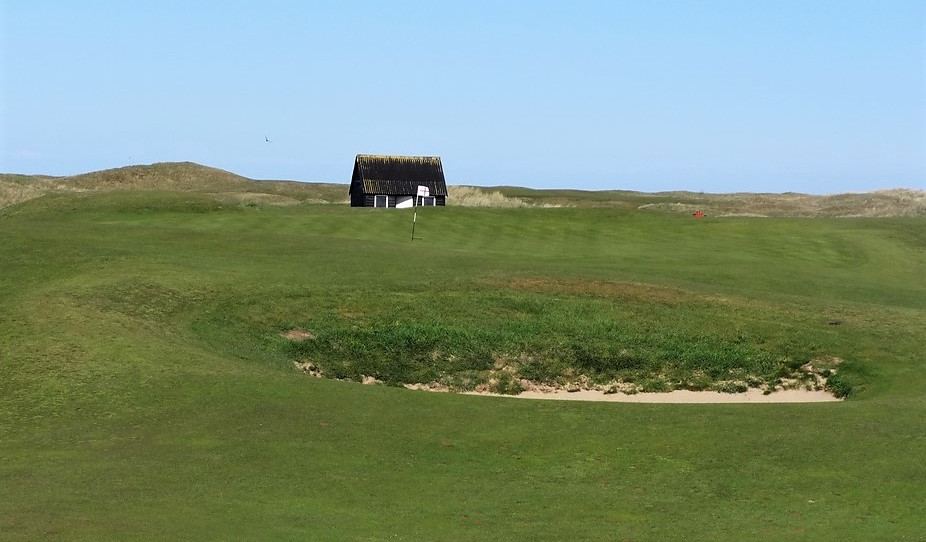
I am not convinced by the merits of long par 3s with tiered greens and that is exactly what #3 provides. Although, in the winter months there is the possibility that balls can run down from the right. An unusual aspect of this hole is the lack of bunkering. This must be one of the few examples of the Open rota courses.
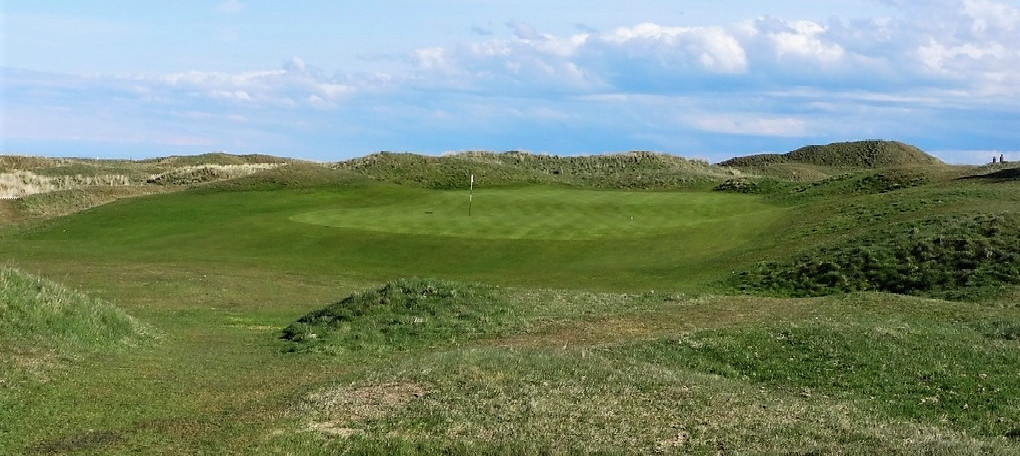
The old 3rd green (Sahara) was located on a similar line to the current, but to the right. The tee shot was directly behind the 2nd green and played toward the 4th hole bunkers before hooking left. It may have played as a bogey 4 due to the odd turn left around sand. What is interesting in the photo below is the bunkers on the 4th are clearly visible. It is also worth noting that the 1888 map indicates the hole was 267 yards. The photo below indicates the hole was 238 yards.
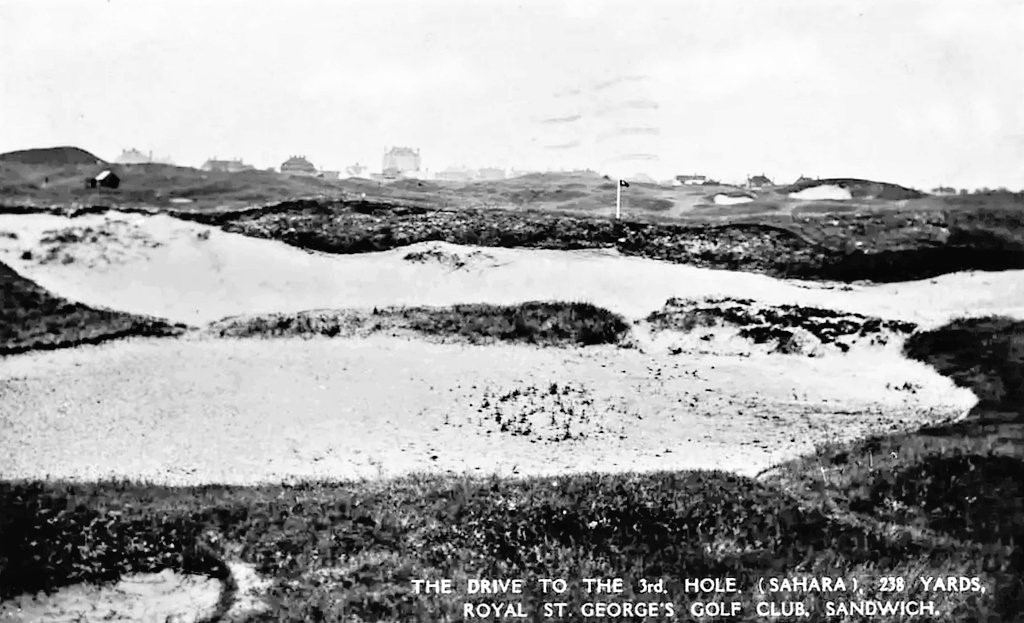
Considering the club has gone to great lengths to eliminate blindness over the past 100+ years it is remarkable how many times we don't see the landing zones. The 4th isn't strictly one of those holes; wisely, fairway runs left around
the prominent bunkers. However, for many, the line will be between the bunkers. This is another hole where the best line of approach is well into the right rough where in places it is jungle country.
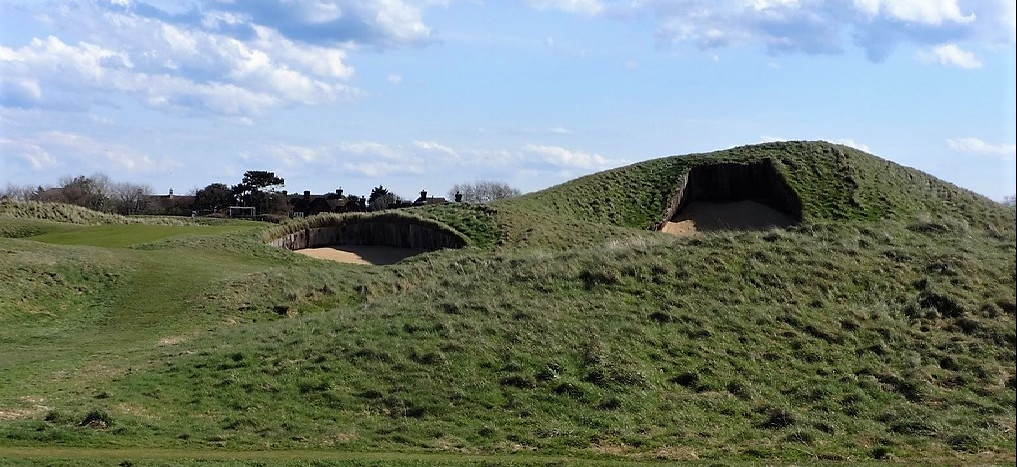
Back in the day.
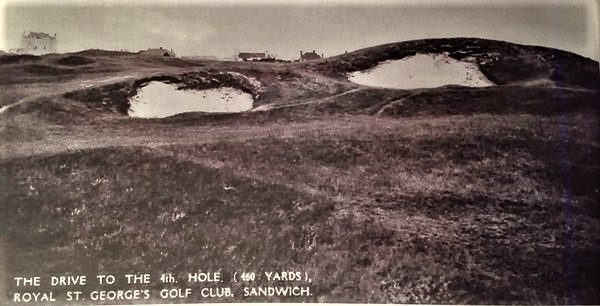
Keeping left over a heaving fairway for the long second shot we encounter a green not unlike the 2nd...if we alter the angle. The greens have a definite theme of large drops-offs (either left or right) or false-fronts. Some lower areas are part of the green, but more often than not the sharp fall-away feeds to fairway. In the case of the 4th, the low front left is part of the green, but I doubt the hole is ever cut in this section.
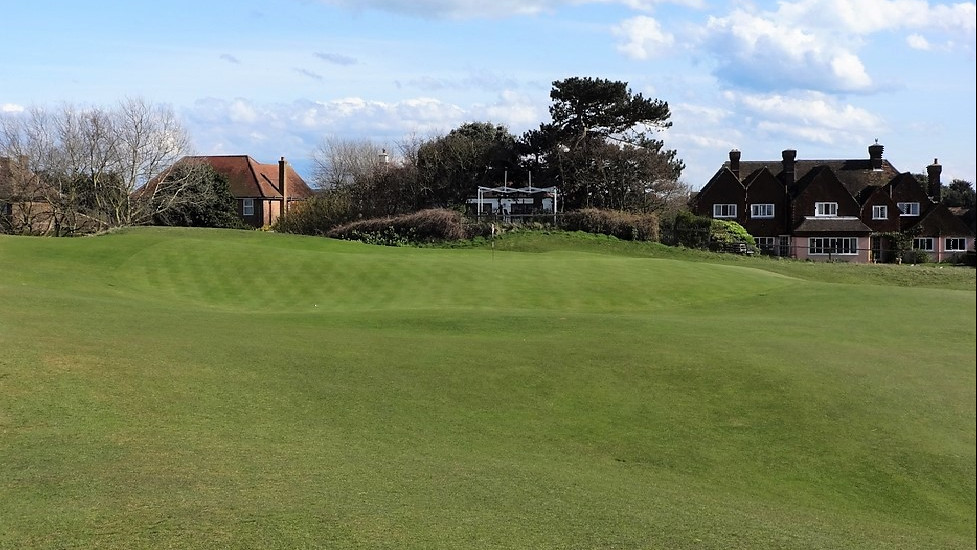
Now well and truly amongst the stately dunes for which St Georges is renowned, the 5th is day in and day out one of the most difficult drives one is likely to encounter. Together with the 3, 8 & 11, the next two holes are among the more radical amendments to the original design. Pegwell Bay is straight ahead, but the drive on what was once a short hole is anything but straightforward. If one hopes to glimpse the flag for the second there is a virtual postage stamp for a landing zone which is chaperoned by a left bunker and formidable rough. One has to wonder if a great deal of luck isn't in play should one somehow finish in the pound seats. The safe (relatively speaking) drive.
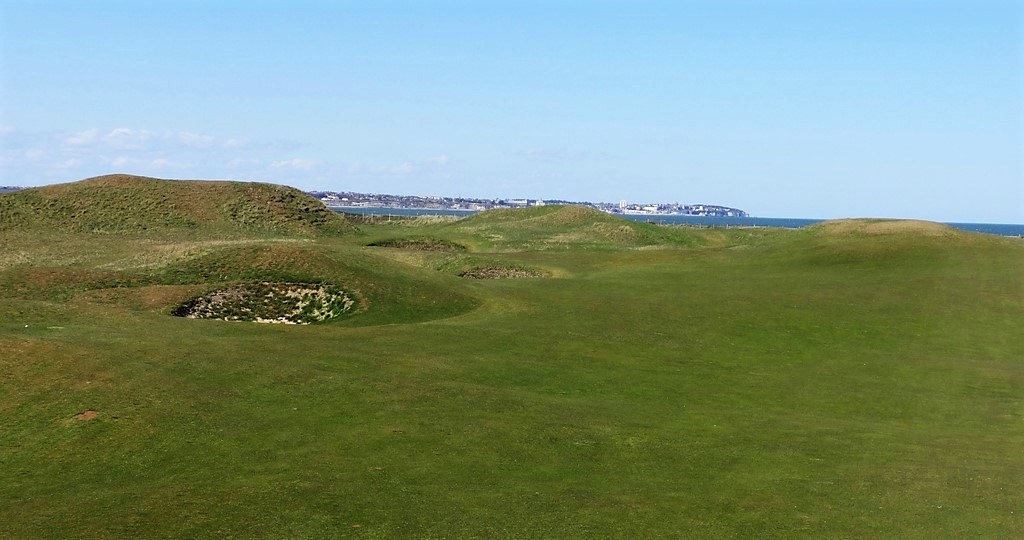
The pound seats.
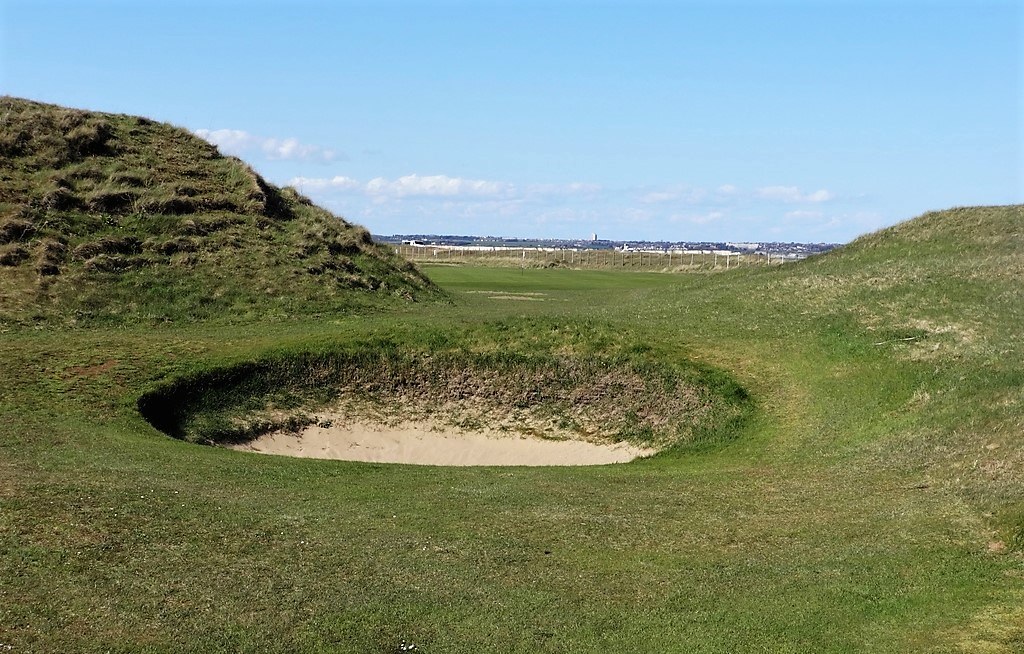
The old Maiden. The hole originally played from where the current 5th fairway breaks up, the ideal spot to see the current green. For safety reasons to protect from incoming tee shots from the 5th, after WWI the tee was moved close to the current 5th green and played over the lower section of the dune, thereby dramatically reducing Maiden's menace.
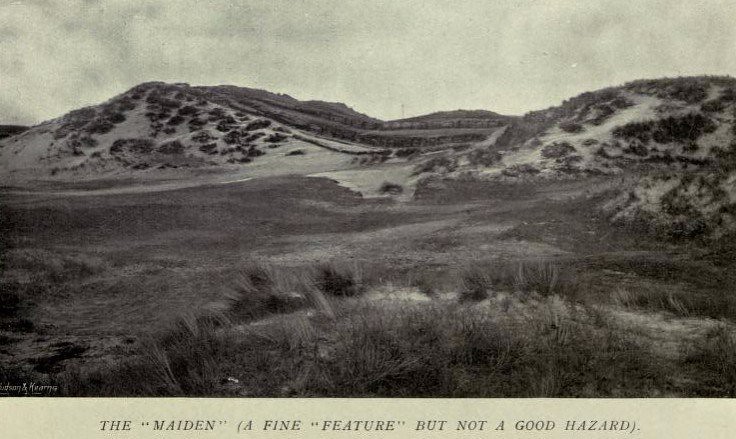
Old Maiden green as seen from atop Maiden. The bold 7th is in the background. Notice the fairway pocket between bunkers just over the dune and on the far side of the fairway; not much has changed.
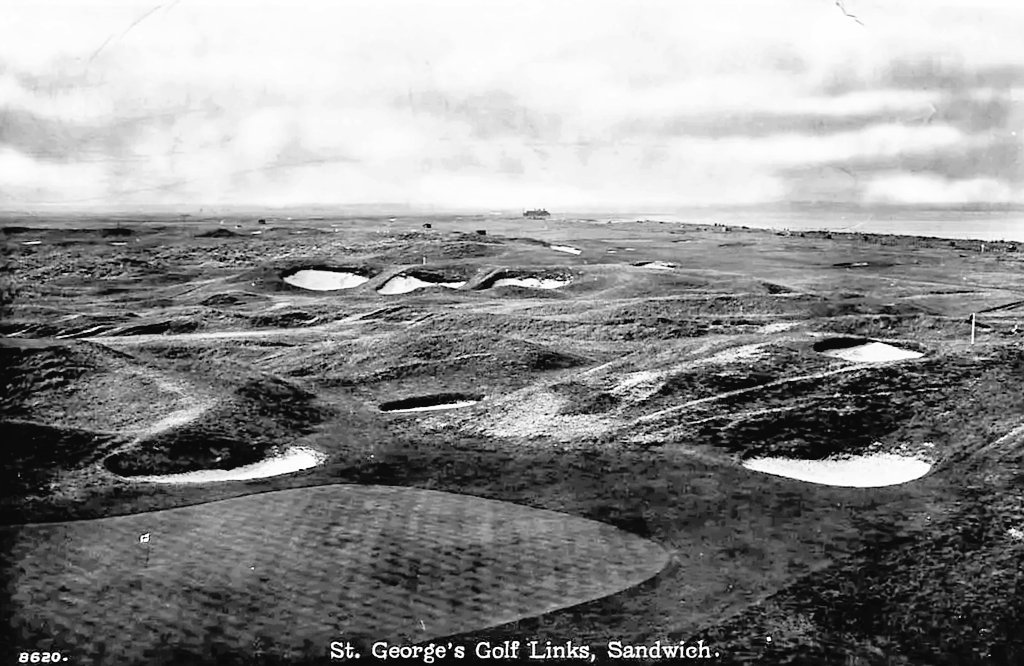
Looking back toward the tee.

In the 1930s Maiden was turned about 90 degrees from the original, heading away from the coast with Maiden flanking the left. Not an exceptional hole, but the short 6th enclosed by dunes is most welcome after the rigours of 4 and 5.
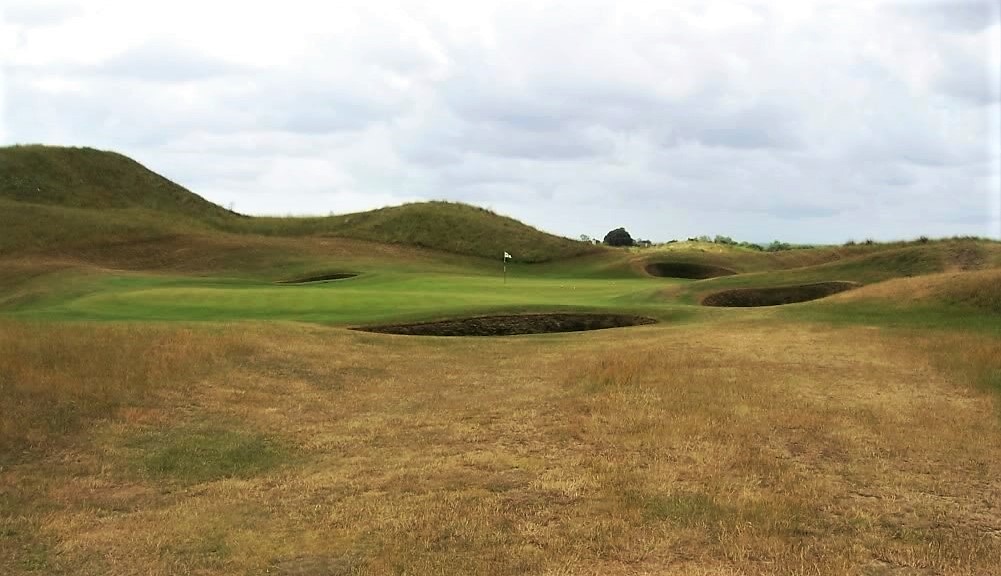
We face another blind drive on the 7th, although the consequences for the wrong line are not so dire as on the 4th. With the drive safely away there is little pressure impeding us from earning a 5. I have a recollection of a few bunkers embeded in the carry dune, but perhaps I am mistaken. The bunkers may have been removed long ago. I suspect one day they will be reinstated.
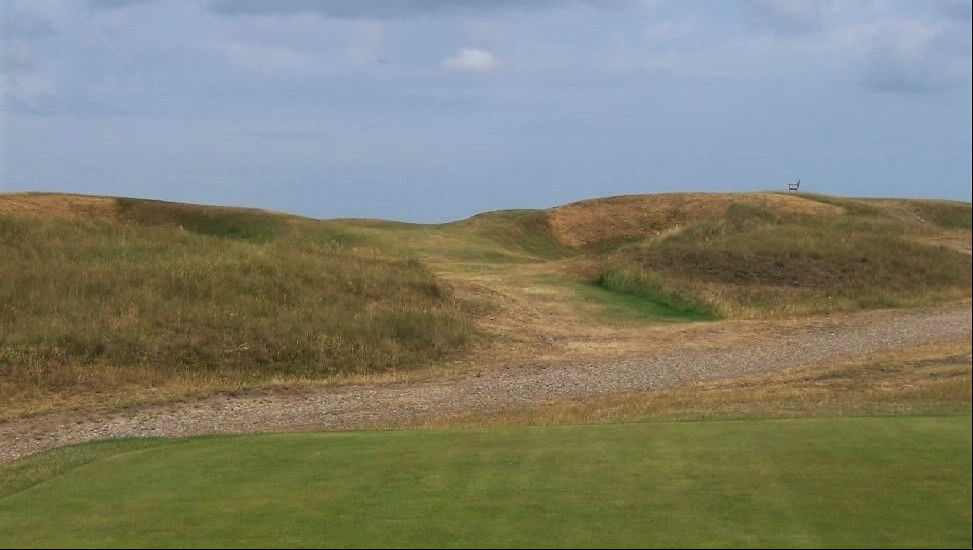
Back in the day.
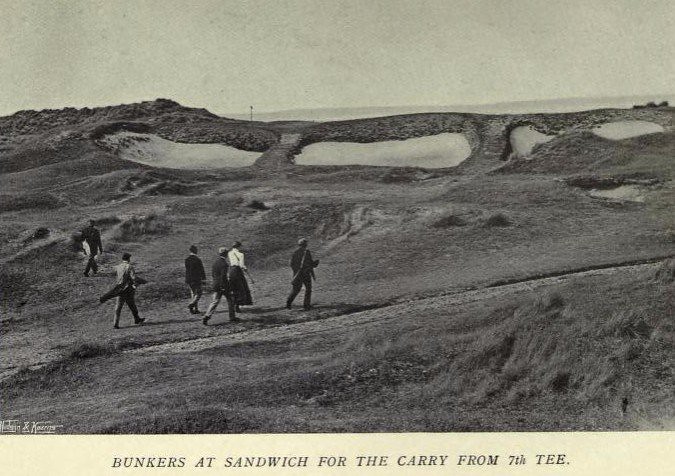
This photo of the sharp legger left underscores the importance of an accurate tee shot.
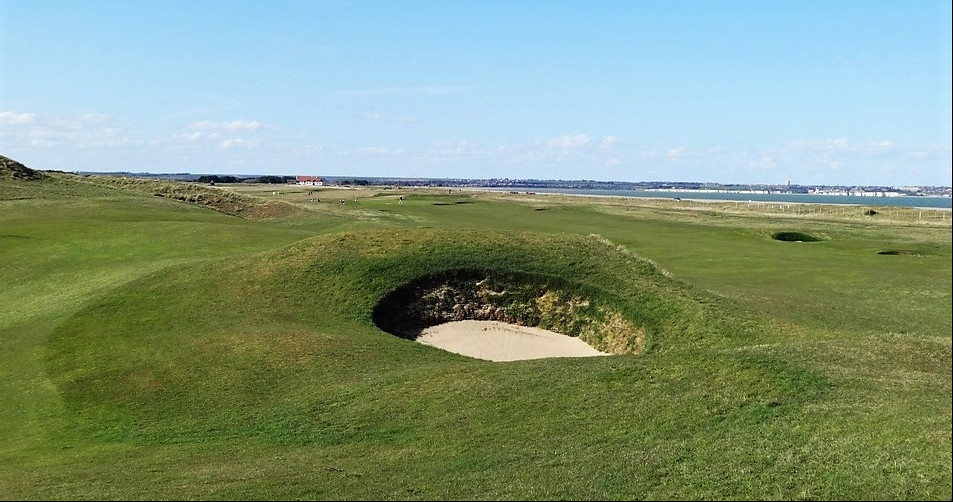
A long walk back to the 8th tee sets up yet another memorable par 4. The hole essentially doglegs right around the old Hades, the short hole replaced in favour of the new par 4. The drive is paramount as staying left for a view of the green cocooned among the dunes is an immense advantage. It is strange then the right corner of the dog leg is defended by two blind bunkers. Below is a look from the end of the fairway. It isn't evident that there is quite a large dead ground area which plays with depth perception and can also serve as a hospitable lay-up space.
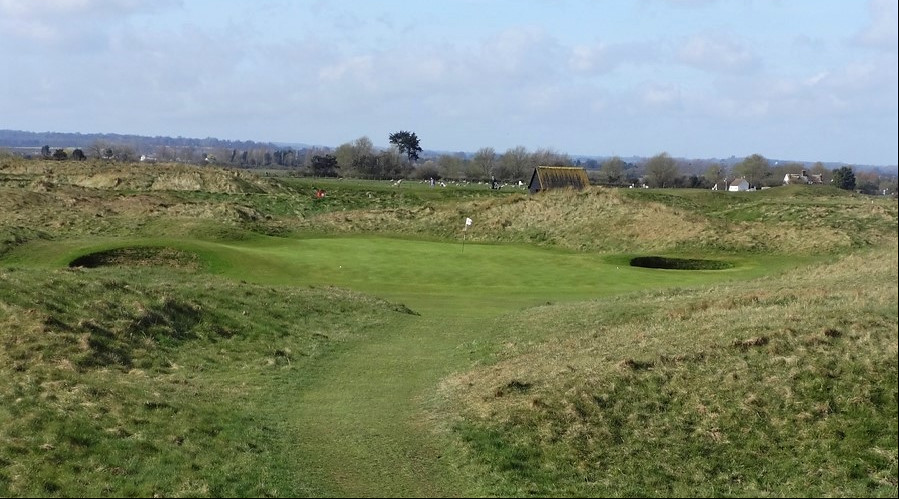
More to follow.
Ciao